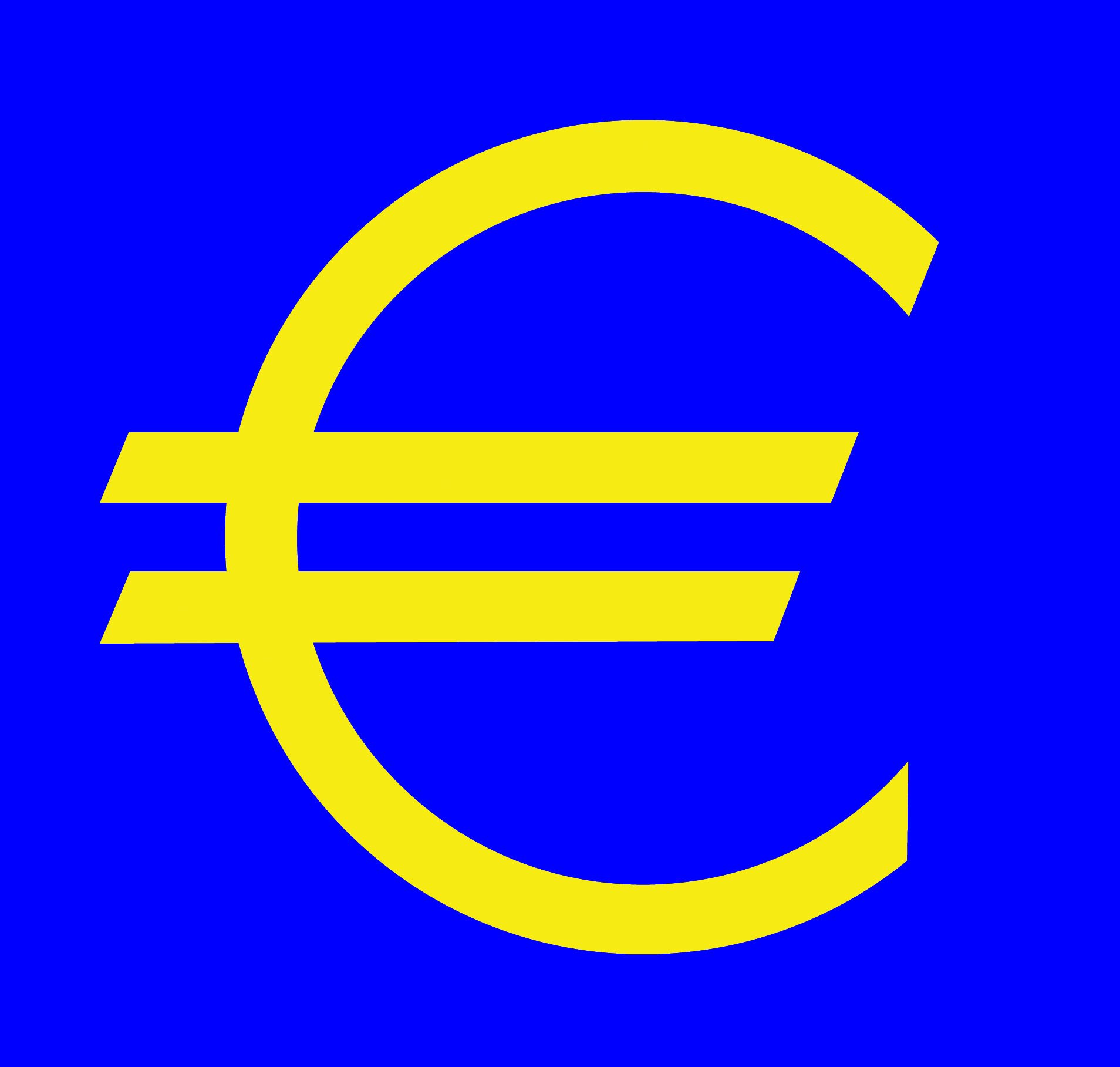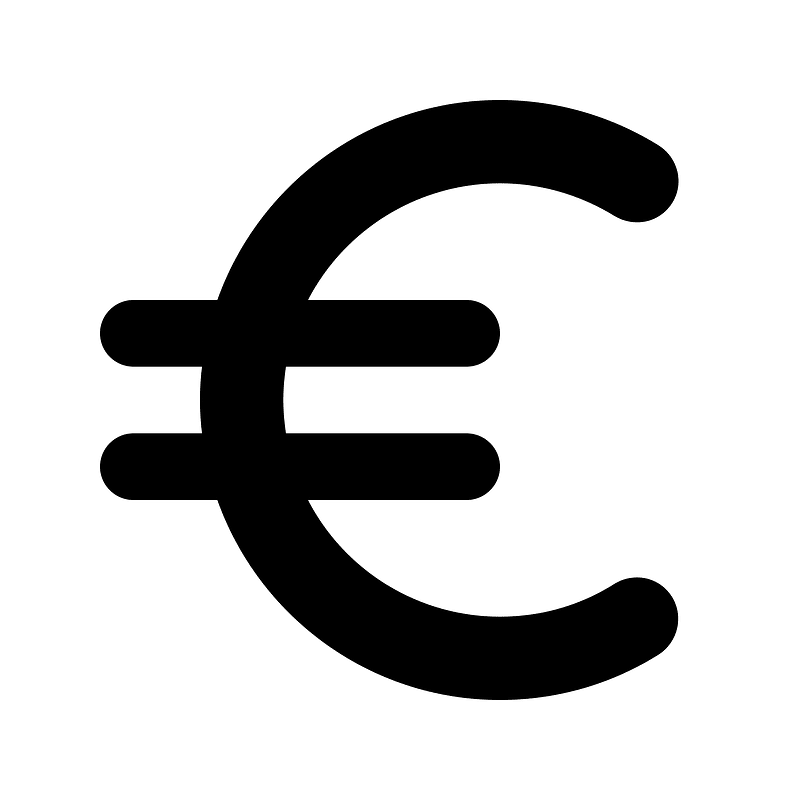What Is The Euro Symbol And Why Does It Matter?
So, here we are talking about one of the most iconic symbols in global finance. What is the euro symbol? You might think it's just a simple design, but trust me, there's so much more to it than meets the eye. It's not just a sign; it's a representation of an entire economic system that affects millions of people worldwide. Whether you're traveling to Europe, doing business with European companies, or simply curious about currency symbols, understanding the euro symbol is essential. Let's dive in!
Imagine this: you're strolling through the streets of Paris or Berlin, and you see prices listed everywhere with this strange "€" symbol. Ever wondered where it came from? Or why it looks the way it does? The euro symbol isn't just a random creation; it has deep roots in history, culture, and economics. This article will take you on a journey to uncover everything you need to know about the euro symbol.
But why does it matter? Well, in today's interconnected world, understanding currencies and their symbols can make a huge difference. Whether you're a traveler, a student, or a businessperson, knowing the ins and outs of the euro symbol can help you navigate financial transactions more confidently. So buckle up because we're about to explore the fascinating world of the euro symbol!
Read also:Ellen Corby The Iconic Life And Legacy Of A Hollywood Legend
History of the Euro Symbol
Origins of the Euro
Let's rewind to the late 1990s when the euro was born. The euro symbol, €, wasn't always around. It was officially introduced on January 1, 1999, as part of the European Union's effort to create a unified currency. But the story of the euro symbol actually began long before that. The designers wanted a symbol that would represent stability, harmony, and modernity while paying homage to Europe's rich history.
Now, here's the fun part: the € symbol was inspired by the Greek letter epsilon (Є). Why? Because Greece is considered the cradle of European civilization. But that's not all! The two parallel lines running through the symbol represent stability and strength. It's like they were saying, "Hey, this currency is here to stay!"
Design Process
The design process for the euro symbol was no walk in the park. A team of designers and economists worked tirelessly to come up with something that would resonate with people across Europe. They wanted a symbol that was easy to recognize, simple to write, and visually appealing. After months of brainstorming, they finally settled on the € symbol we know today.
Interestingly, the symbol was designed to look like an "E" with two horizontal lines, making it distinct from other currency symbols like the dollar ($) or the yen (¥). This was intentional because they wanted the euro to stand out as a unique and powerful currency. And let's be honest, it worked!
Understanding the Euro Symbol in Practice
How to Use the Euro Symbol
So, you've got this fancy € symbol, but how do you actually use it? Well, it's pretty straightforward. In most European countries, the euro symbol comes before the number, like this: €50. However, in some places, you might see it written after the number, like 50€. Confusing, right? Not really! It just depends on the local customs and preferences.
Here's a quick tip: if you're writing for an international audience, it's best to stick with the standard format of €50. This way, everyone will know exactly what you're talking about. Plus, it looks more professional and polished. Now, if you're dealing with large amounts, like €1,000,000, don't forget to use commas to make it easier to read!
Read also:Full Hd Sexy The Ultimate Guide To Highquality Visuals That Pop
Typing the Euro Symbol
Ever tried typing the € symbol on your keyboard? It can be a bit tricky if you don't know the shortcuts. On Windows, you can hold down the Alt key and type 0128 on the numeric keypad. On a Mac, it's even easier—just press Option+Shift+2. If you're using a smartphone, you'll usually find the € symbol by holding down the $ key until more options appear.
But what if you're coding or working with HTML? No worries! You can use the code € to display the euro symbol on your website. Pretty cool, huh? And if you're into LaTeX or other typesetting systems, there are specific commands for that too. Just make sure you're using the right encoding to avoid any weird glitches.
Why the Euro Symbol Matters
Economic Significance
Now that we know where the euro symbol came from and how to use it, let's talk about why it matters. The euro is more than just a currency—it's a symbol of economic unity and cooperation among European countries. By adopting the euro, countries like Germany, France, and Italy have been able to streamline trade, reduce exchange rate risks, and boost economic growth.
But it's not all sunshine and rainbows. The euro has also faced its fair share of challenges, from the 2008 financial crisis to the Greek debt crisis. Despite these hurdles, the euro remains one of the most widely used currencies in the world, second only to the US dollar. And the € symbol plays a crucial role in this, serving as a visual reminder of the euro's importance in global finance.
Cultural Impact
Let's not forget the cultural significance of the euro symbol. It's not just a financial tool; it's also a symbol of European identity and unity. Think about it: before the euro, each country had its own currency with its own unique symbols. The French had the franc (₣), the Germans had the mark (ℳ), and the Italians had the lira (₤). Now, they all share the same symbol: €.
This shared symbol has helped break down barriers and foster a sense of belonging among Europeans. It's like saying, "We may come from different backgrounds, but we're all part of the same team." And let's be honest, who doesn't love a good team spirit?
Common Misconceptions About the Euro Symbol
Myth vs. Reality
There are a lot of myths floating around about the euro symbol. Some people think it's just a random design, while others believe it was inspired by the dollar symbol. Neither of these is true! As we discussed earlier, the € symbol was carefully designed to reflect Europe's history and values. But that doesn't stop people from spreading rumors.
Another common misconception is that the euro symbol is the same as the yen symbol (¥). While they do look similar, they're actually quite different. The yen symbol has only one horizontal line, while the euro symbol has two. See the difference? It's like comparing apples to oranges!
Clearing the Air
So, how can we clear up these misconceptions? Education, of course! By spreading accurate information about the euro symbol and its origins, we can help people understand its true meaning and significance. And who knows? Maybe one day everyone will appreciate the beauty and complexity of this little symbol.
Practical Applications of the Euro Symbol
Business and Finance
For businesses and financial institutions, the euro symbol is an essential tool. Whether you're dealing with invoices, contracts, or financial reports, having a standardized symbol makes life so much easier. Imagine trying to do business in Europe without knowing what the € symbol means! It would be like trying to navigate a foreign city without a map.
But it's not just about convenience. Using the euro symbol correctly can also help build trust with clients and partners. If you're dealing with large sums of money, accuracy is key. A simple mistake like using the wrong symbol can lead to confusion and even legal issues. So, always double-check your work!
Everyday Life
For everyday people, the euro symbol is just as important. Whether you're shopping at the local market or booking a hotel room, knowing how to read and write the € symbol can save you a lot of headaches. Plus, it's just good practice to be familiar with the currency symbols of the countries you visit. You never know when you'll need them!
Future of the Euro Symbol
Global Expansion
As the world becomes more connected, the euro symbol is likely to gain even more prominence. With the rise of digital currencies and online transactions, having a standardized symbol is more important than ever. And while the euro may face challenges in the future, its symbol will undoubtedly remain a powerful and recognizable icon.
But what about the future of currency symbols in general? With the advent of cryptocurrencies like Bitcoin and Ethereum, we may see new symbols emerge to represent these digital currencies. Only time will tell how the landscape of currency symbols will evolve, but one thing is for sure: the € symbol will continue to play a major role in global finance.
Adaptation and Innovation
As technology advances, we can expect to see new and innovative ways of using the euro symbol. From augmented reality apps that let you visualize prices in real-time to smart contracts that automatically convert currencies, the possibilities are endless. And while some may fear that these advancements will make the euro symbol obsolete, I think they'll only enhance its relevance and usefulness.
Conclusion: Embrace the Euro Symbol
So there you have it—everything you need to know about the euro symbol. From its origins and design to its practical applications and future prospects, we've covered it all. The € symbol may seem like a small thing, but it has a big impact on our lives, whether we realize it or not. So next time you see that little "E" with two lines, take a moment to appreciate its significance.
Now, here's where you come in. If you found this article helpful, why not share it with your friends and family? Or leave a comment below and let us know what you think. And if you're hungry for more knowledge, check out our other articles on finance, travel, and everything in between. Remember, the more you know, the better equipped you'll be to navigate the world of global finance. So keep learning, keep exploring, and most importantly, keep embracing the euro symbol!
And with that, I'll leave you with this final thought: the euro symbol isn't just a sign—it's a symbol of unity, strength, and progress. So let's celebrate it for all it represents and continue to use it wisely. Until next time, stay curious and keep those questions coming!
Table of Contents
- History of the Euro Symbol
- Origins of the Euro
- Design Process
- Understanding the Euro Symbol in Practice
- How to Use the Euro Symbol
- Typing the Euro Symbol
- Why the Euro Symbol Matters
- Economic Significance
- Cultural Impact
- Common Misconceptions About the Euro Symbol
- Myth vs. Reality
- Clearing the Air
- Practical Applications of the Euro Symbol
- Business and Finance
- Everyday Life
- Future of the Euro Symbol
- Global Expansion
- Adaptation and Innovation


